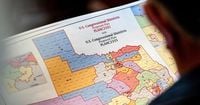In a move that’s set political dominoes tumbling from Austin to Sacramento, Texas lawmakers have approved a controversial new congressional map, drawing fierce debate and nationwide attention. The passage, which took place on August 20, 2025, in the Texas House of Representatives, is poised to give Republicans a significant edge in next year’s midterm elections, with the potential to flip five Democratic-held seats in the US House of Representatives. The vote, which ended 88-52 after hours of heated debate, capped off a dramatic two-week standoff that saw Democratic lawmakers flee the state in protest, only to return under police watch to ensure their attendance for the crucial session.
According to Reuters, the new map was drawn at the behest of President Donald Trump, who has been vocal in his support for redistricting efforts designed to shore up Republican control in Congress. Republicans currently hold a razor-thin majority in the 435-seat House—just three seats after the 2024 elections. The stakes couldn’t be higher, and the battle lines in Texas have only deepened the national divide over how political power is distributed through redistricting.
The saga began earlier this month when dozens of Democratic lawmakers staged a walkout, leaving Texas to deny Republicans the quorum needed to pass the redistricting bill. Their absence brought legislative work to a standstill and drew national headlines. Governor Greg Abbott, a Republican, responded by ordering their arrest, and law enforcement monitored some Democrats’ homes while they were away, as reported by BBC. When Democrats returned to Austin on August 18, they were placed under round-the-clock police supervision to ensure they wouldn’t skip the vote again. In a symbolic act of resistance, Representative Nicole Collier chose to sleep on the House floor rather than accept a police escort, a gesture that inspired others to join her and tear up their police escort agreements.
The drama inside the Capitol was matched by the intensity of the debate on the House floor. Democratic lawmakers peppered Republicans with amendments and questions, accusing their colleagues of gerrymandering and racial discrimination. Representative John Bucy, a Democrat, didn’t mince words: “This is not democracy, this is authoritarianism in real time. This is Donald Trump’s map. It clearly and deliberately manufactures five more Republican seats in Congress because Trump himself knows the voters are rejecting his agenda.” His concerns were echoed by Representative Ann Johnson, who charged, “So let’s talk about cowardice and cheats, because if you knew you could win this next election, you wouldn’t be taking this effort to try to steal five seats from elected officials that members of color elected to represent them in Washington, D.C.”
Republicans, for their part, defended the process and the legality of the new maps. Representative Todd Hunter, who introduced the bill, said, “The underlying goal of this plan is straightforward: Improve Republican political performance.” He pointed to the US Supreme Court’s decision in Rucho v. Common Cause, which allows states to draw congressional districts based on political performance. Responding to accusations of secrecy, Hunter fired back at Democrats for their 18-day absence: “Well, you’ve been gone in the cloak of darkness for 18 days. I could have public input while you were gone. You prevented this. You were gone from acting.”
One of the more technical points of contention was whether the new districts would dilute the voting power of minority communities. Democrats and civil rights groups argued that the redrawn lines would violate the federal Voting Rights Act by diminishing Black, Latino, and Asian voters’ influence. Representative Ramon Romero pressed Hunter on whether any analysis had been done to determine if voting was racially polarized before, during, or after the map’s creation. Hunter responded by breaking down the numbers: “In 2021, there were nine Hispanic majority districts. In this plan, there are 10 Hispanic majority age districts. In the 2021 plan, there were seven Hispanic citizen voting age districts, and under this plan, there are eight.” Republicans insisted the changes would actually increase majority-Hispanic districts, a point hotly disputed by their opponents.
Beyond the technicalities, the emotional stakes were clear. Representative Chris Turner criticized the process for removing key economic engines from certain districts and ignoring local voices: “You removed key economic engines from CD 30, like Love Field in Downtown Dallas. Hell, you even took her home out of her district. She told you that, but you ignored her on that, too. Just like you ignored the thousands of Texans who voiced their strong opposition to this corrupt process.”
As the dust settled, both sides looked to the next battlegrounds. The map now heads to the Texas Senate, where a committee hearing and floor vote are scheduled for August 21, 2025. If passed, it will go to Governor Abbott for his signature. Democrats have already pledged to challenge the map in court, arguing that the mid-decade redistricting—while permitted by the US Constitution—is being abused for partisan gain. “We were just trying to get the Republicans to specify how they came up with it because they have to try really hard to silence minority voices when the growth of 95% of Texas population has been in minority communities,” said Representative Salman Bhojani. “We wanted to get that on the record so that we can go to the courts.”
The repercussions of the Texas vote are rippling across the country. According to Reuters and BBC, California’s Democratic-controlled legislature is preparing its own redistricting map, aiming to create five new Democratic-leaning districts to offset Texas’s changes. California Governor Gavin Newsom weighed in after the Texas vote, posting on X: “It’s on, Texas.” The California vote is set for August 21, 2025, and, unlike Texas, the new map would require voter approval in a November special election. Other states—both Republican and Democratic, including Ohio, Florida, Indiana, Missouri, Maryland, and Illinois—are also considering or moving forward with their own redistricting efforts. The national stakes are clear: with Republicans holding only a slim majority in the House, every seat counts, and the outcome of these battles could well determine control of Congress in 2026.
Speaker of the House Dustin Burrows summed up the Republican perspective, stating, “Today’s passage of the congressional map has ushered in a new chapter of Republican unity, and I am proud to have led my colleagues in this important achievement.” On the other side, the Democratic National Committee decried the process as “a shame — a craven, power-hungry, unconstitutional shame,” vowing continued resistance both in Texas and nationwide.
For Texans, the redistricting fight is more than just political theater—it’s a battle over representation, power, and the future of the state’s rapidly changing population. As the legal challenges mount and other states prepare their countermoves, the eyes of the nation remain fixed on Texas, where the lines drawn this summer may well decide the shape of American politics for years to come.






